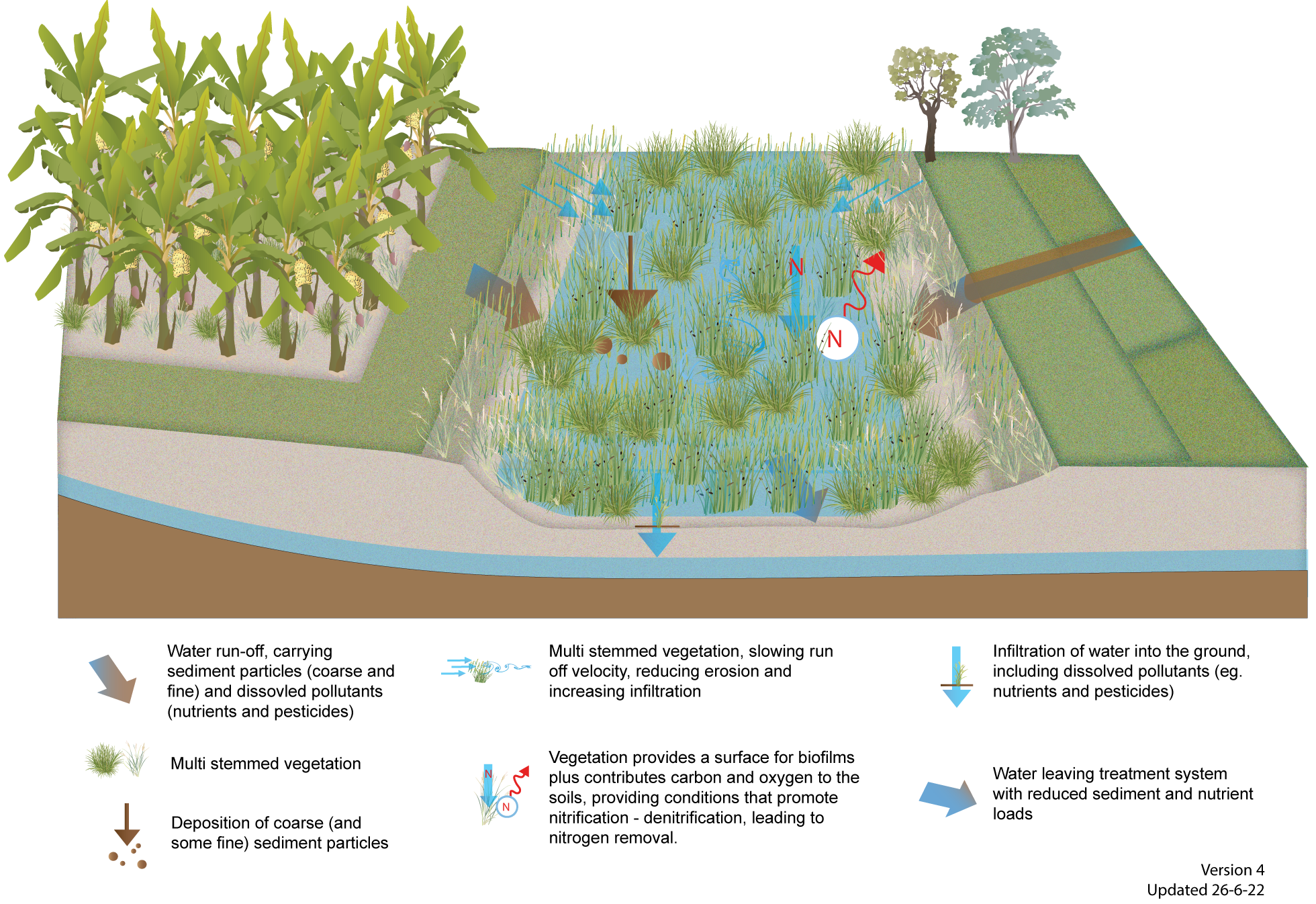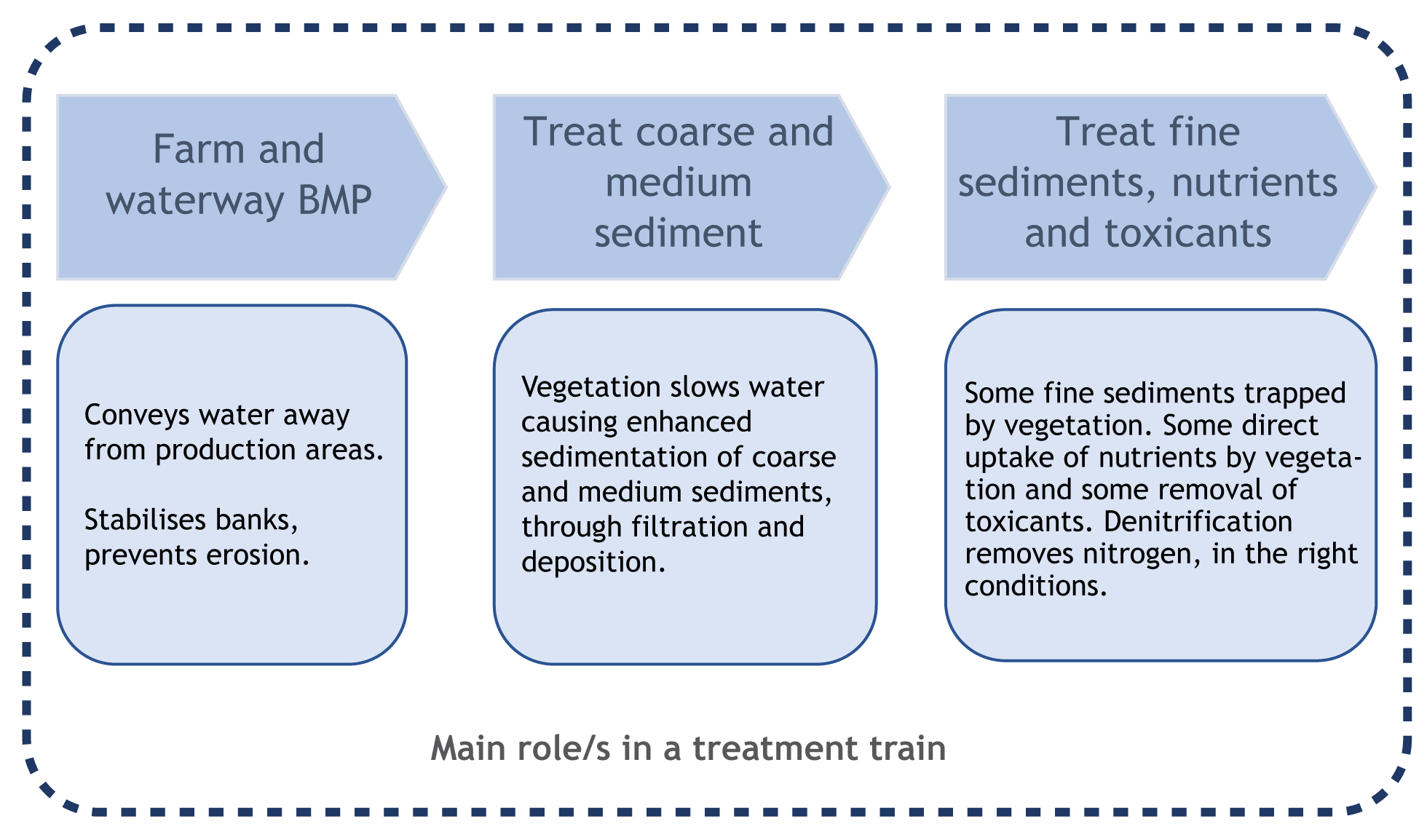|
|
Vegetated drainsVegetated drains — Key considerationsSelect from the tabs below What makes an effective vegetated drain for treating run-off?
Treatment processes
Suitability and limitationsVegetated drains are suitable in almost all agricultural and aquaculture production systems and climates. Drains are common throughout farms in Queensland, providing opportunities to improve water quality by modifying and managing drains to encourage and retain vegetation. Residence time will influence the effectiveness of vegetated drains in removing nutrients and toxicants. Therefore, vegetated drains will be more effective if water flow is relatively slow, maximising the time water is in contact with vegetation. Vegetated drains with extended residence times act as linear wetlands, promoting nutrient and toxicant removal[1]. DisclaimerIn addition to the standard disclaimer located at the bottom of the page, please note the content presented is based on published knowledge of treatment systems. Many of the treatment systems described have not been trialled in different regions or land uses in Queensland. The information will be updated as new trials are conducted and monitored. If you have any additional information on treatment systems or suggestions for additional technologies please contact us using the feedback link at the bottom of this page. References
Last updated: 24 May 2022 This page should be cited as: Department of Environment, Science and Innovation, Queensland (2022) Vegetated drains — Key considerations , WetlandInfo website, accessed 8 May 2025. Available at: https://wetlandinfo.des.qld.gov.au/wetlands/management/treatment-systems/for-agriculture/treatment-sys-nav-page/vegetated-drains/design-summary.html |

 — Department of the Environment, Tourism, Science and Innovation
— Department of the Environment, Tourism, Science and Innovation




